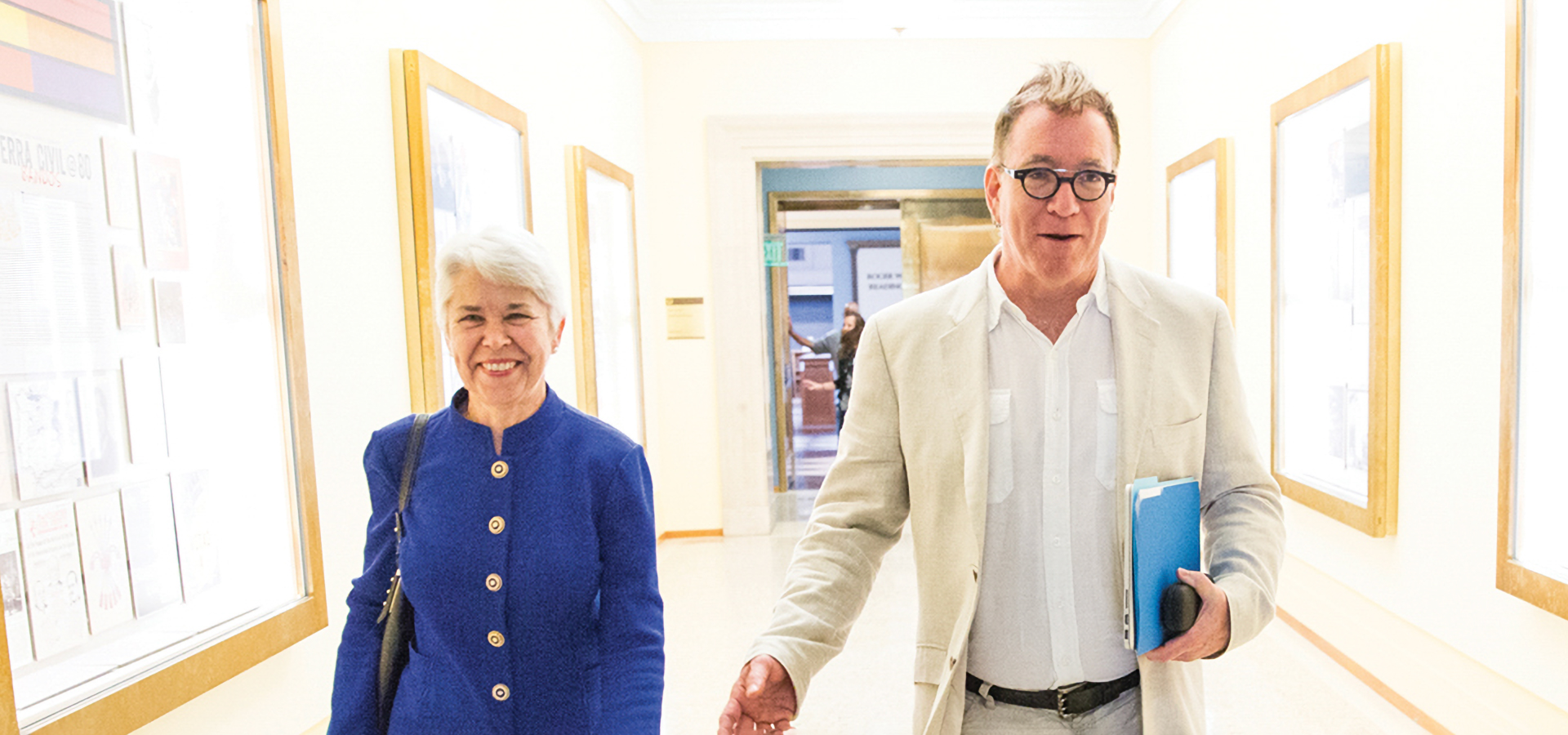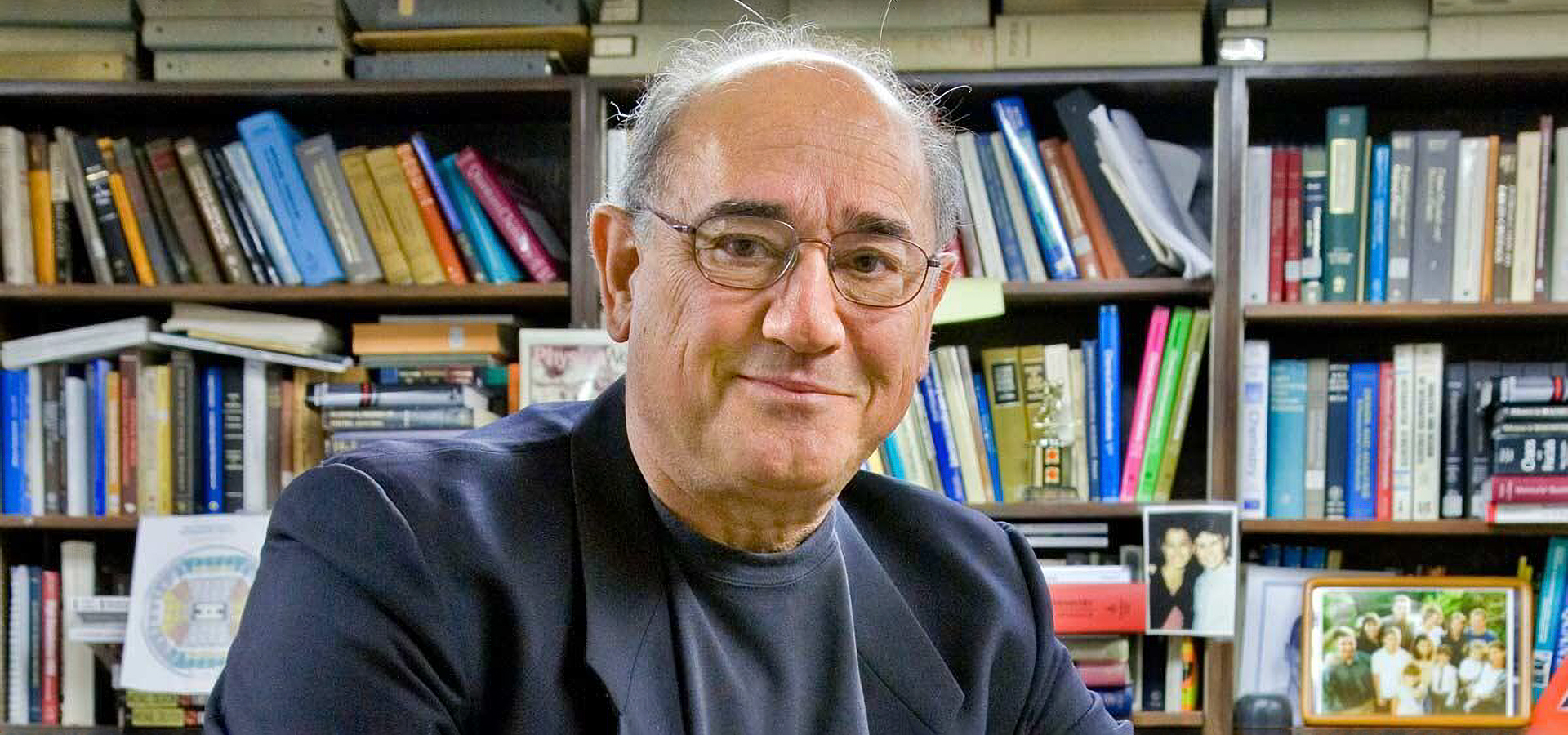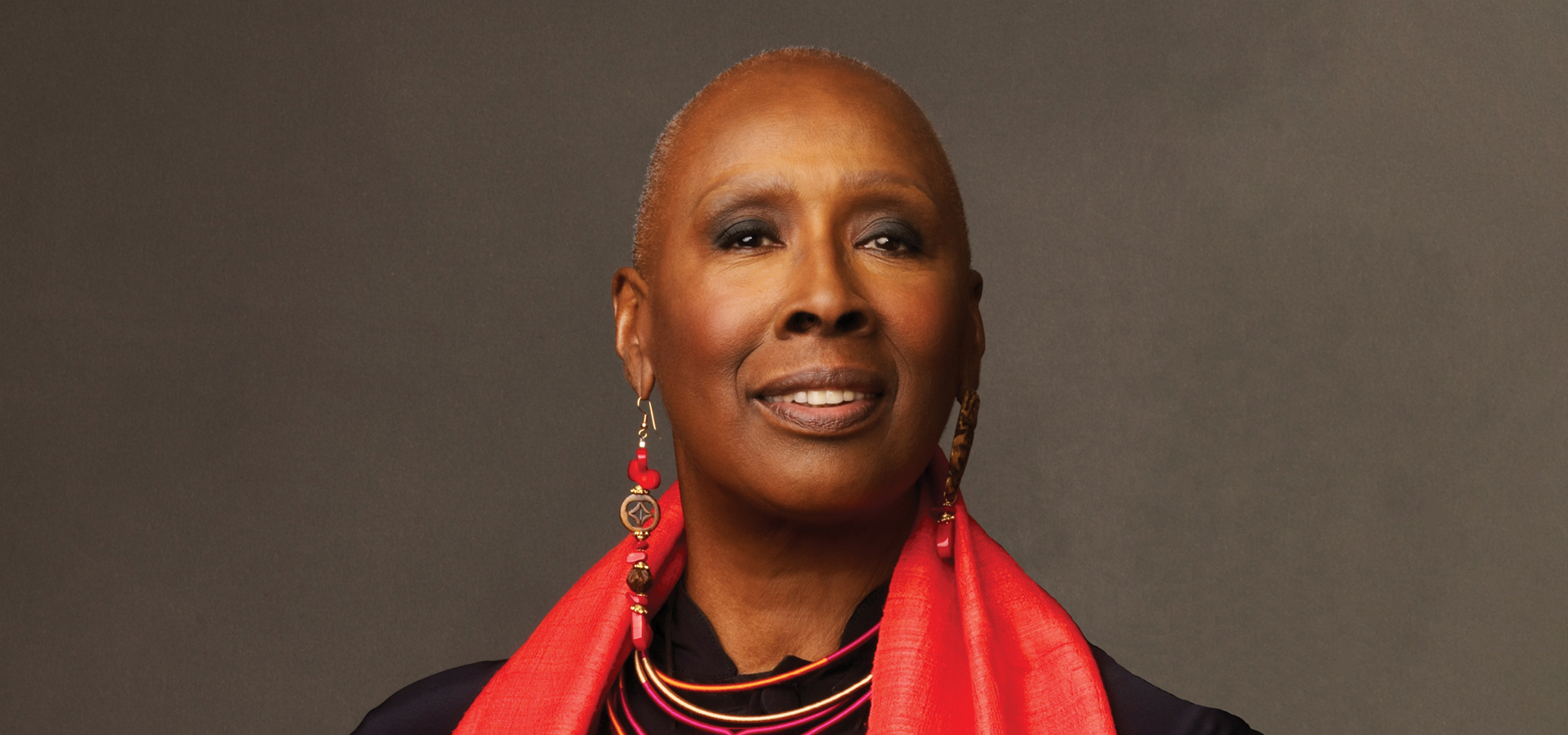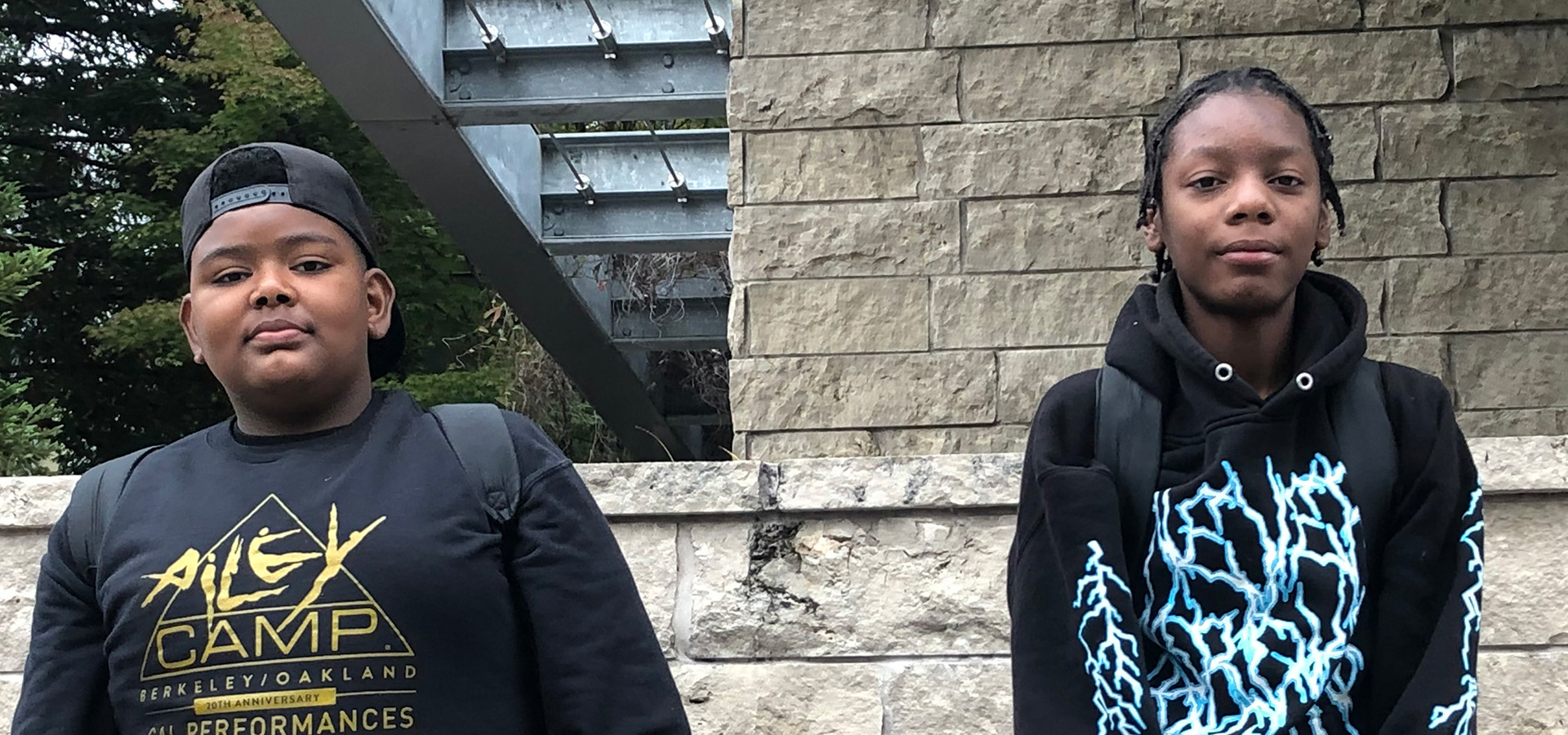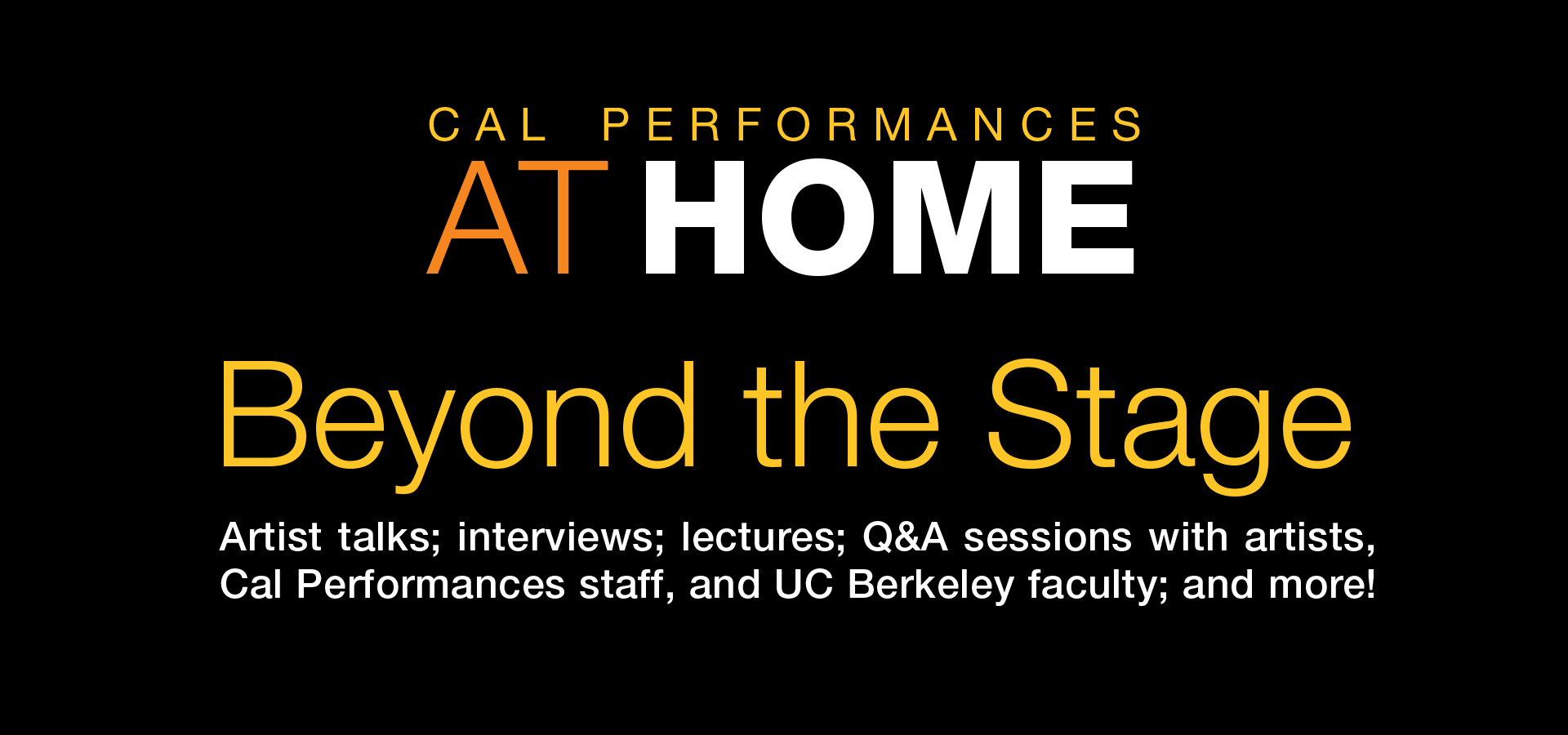
Cal Performances at Home is much more than a series of great streamed performances. Fascinating behind-the-scenes artist interviews. Informative and entertaining public forums. The Cal Performances Reading Room, featuring books with interesting connections to our Fall 2020 programs. For all this and much more, keep checking this page for frequent updates and to journey far, far Beyond the Stage!
Major support for Beyond the Stage is provided by Bank of America.
Beyond the Stage
5 Questions with Groundbreaking Pianist Michelle Cann
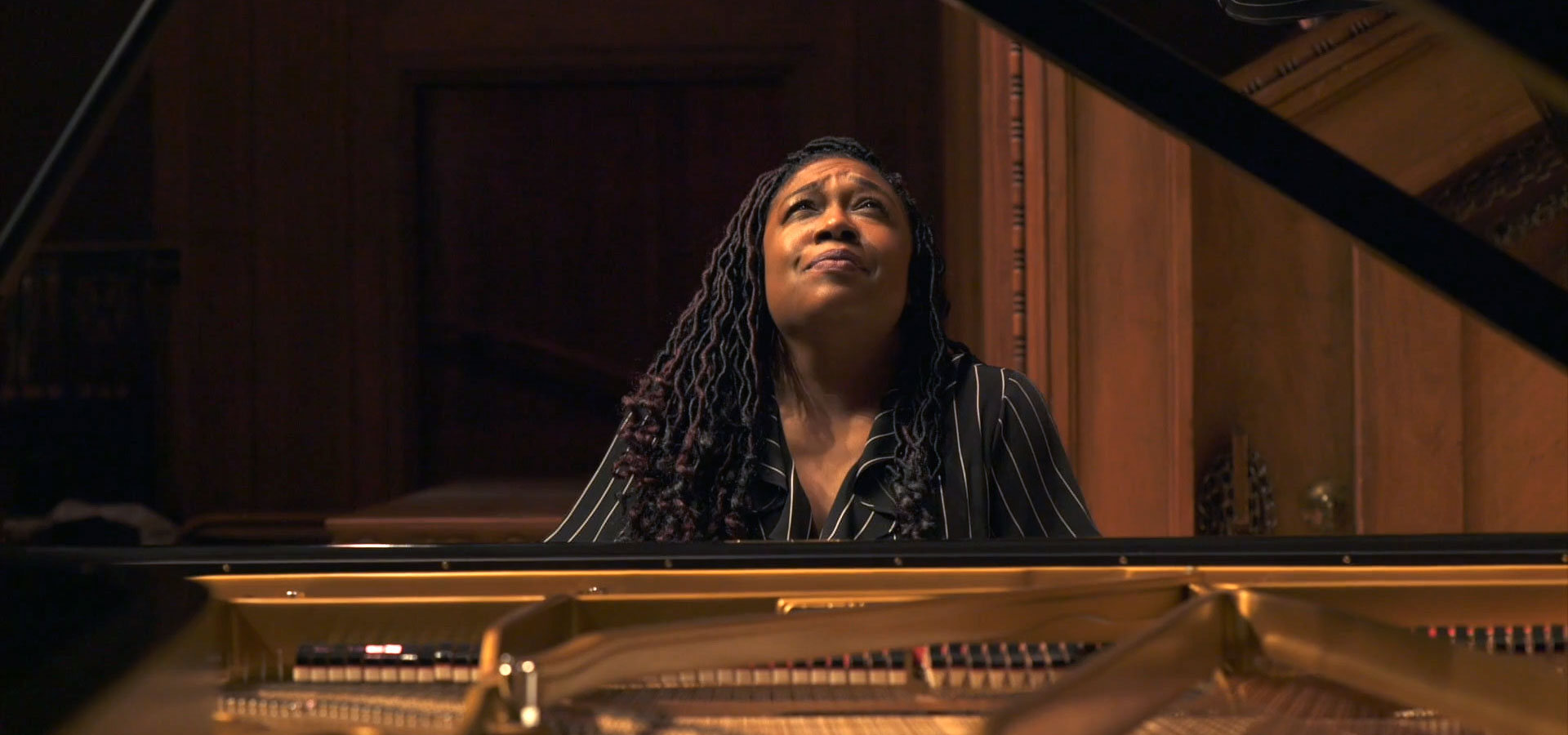
5 Questions with Groundbreaking Pianist Michelle Cann
“a desire to inspire change”
Interview of Michelle Cann by Krista Thomas, Cal Performances’ Associate Director of Communications
Michelle Cann is a star in every sense: a phenomenal pianist, an empathetic educator, and an impassioned champion of underrecognized Black female pianist-composers. In 2022, Cann won the Sphinx Medal of Excellence, which is awarded based on “artistic excellence, outstanding work ethic, a spirit of determination, and an ongoing commitment to leadership and [artists’] communities.” Around that same time, she also became the first African American appointed to the piano faculty at the Curtis Institute of Music, where she continues to teach and mentor other musicians. Cal Performances is thrilled to welcome Cann for the first time to Hertz Hall on October 29 for a characteristically rich program that mixes classical works with the music of the brilliant American composer Florence Price, as well as a new work by Joel Thompson that reflects on the killing of unarmed Black men in the US.
Ahead of her Cal Performances debut, Cann answered questions about her program, her career, and what it means to be “successful.”
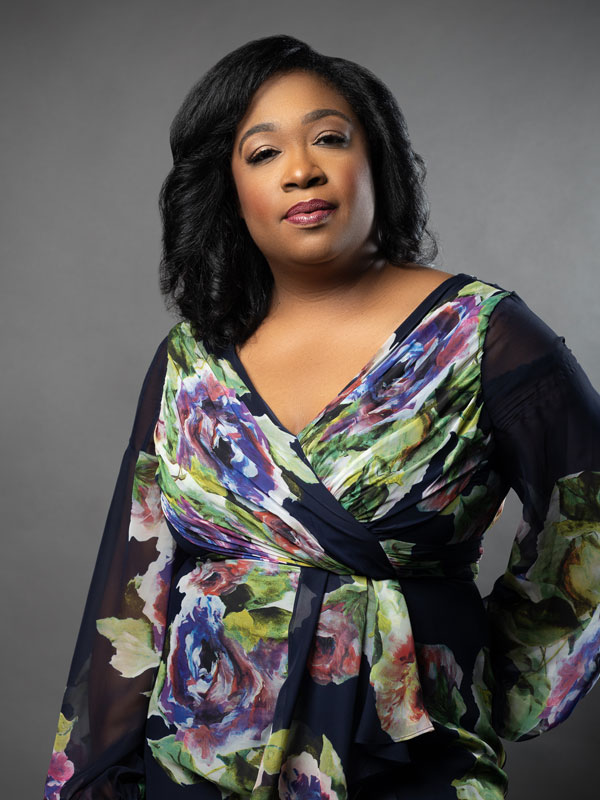 Q: This is your debut at Cal Performances. What is your primary objective with a debut? What approach do you take in crafting a program for a new audience?
Q: This is your debut at Cal Performances. What is your primary objective with a debut? What approach do you take in crafting a program for a new audience?
A: For me, it doesn’t make a difference if it’s a debut, because it’s important to consider the audience whether it’s their first time or fifth time seeing me. I’m always thinking, “What do I think the audience will really value? What do they already know and love? And, how can I teach them something new?” I still program works people already know and will be happy to hear played, but I also feel that, as musicians in this day and age, we are doing nothing for the field if we sit right there. We have a duty to also bring something to broaden the audience’s perspective and expand the classical field for generations to come. There has got to be a balance.
You can see that approach in this program, too. I have some traditional works like the Ginastera sonata, everyone knows Ravel and Liszt; but then there’s also Price and Thompson. With Thompson, I’m bringing something very new—he only wrote that piece during the pandemic; and while Price is an older composer, many audiences are still getting to know her and her music.
Q: You are known as one of the premiere champions of Florence Price’s work. You’ve mentioned previously that you were first introduced to Price in 2016 when you were asked to perform her Piano Concerto in One Movement. What drew you to Price initially, and is it the same thing that draws you to her today?
A: My initial excitement and shock came from really loving the piano concerto I was asked to play. It was charming and powerful and made me curious to know more about the creator. Then when I found out how phenomenal she was, it only enhanced the value of the music.
As I read more about her, though, I was also disappointed because she encountered so many barriers, as many Black composers during that period did. When she died in the 1950s, she could never say she overcame them all—she never got to have her concertos performed with any major orchestra other than the Chicago Symphony, and many of her works remained unpublished at her desk. And I’m upset it has taken so long to uncover her work. When people say they don’t want to hear about race, I always think we are still talking about it because we still have so much work to do. The fact that someone like this has had to wait until 2018 to have things be rectified and get recognition, that’s a problem.
For me, that is how the thread has taken on a different meaning over time. It has become a mission to me, that desire to inspire change. Part of this is performing her music and sharing the power and beauty of her writing because that speaks for itself. That said, there are even more Black female composers than Price who have not been given their due, and I’m going to be one of those people to do something about it.
Q: The program you’re bringing to Cal Performances features Price’s Piano Sonata in E minor. What made you want to perform this work, and what do you think audiences should know about it beforehand?
A: Programming Price was an easy decision because she was the beginning of my journey in finding these forgotten or lost voices. This sonata in particular is the grandest piano work in her repertoire, and it has additional significance because she was most known for winning a competition in 1932 for her Symphony No. 1, which was later performed by the Chicago Symphony and ultimately put her on the map. But fewer people know that, in that same competition, she also submitted this sonata in a different category and won top prize for it as well, so it had a lot of significance to her.
I also think this work showcases all the things that are great about her. Each movement in the sonata brings in influences from her life and writing that you see in the rest of her music. In the first movement especially, you hear the connection to past titans of Romantic composition who inspired her, such as Dvořák and even Schumann and Brahms. There are moments that are reflective of each of their musical styles, and yet it is so original to Price. She is clearly inspired by their music and mixes it with folk material and folk songs.
The second movement is very beautiful and it’s based on the form of a spiritual, which tended to be repetitive, employ simple melodies, and be very religious in nature and able to speak to the Black American experience in slavery and beyond. In this instance, she has crafted her own original spiritual, not based on any known work.
Finally, in the third movement, she breaks into all types of dances. There are traces of the Juba dance, you hear a little blues and a little jazz, as well as various old African dances. And then you suddenly hear those Romantic influences again as well. This was all part of who Price was: She was trained in classical style and understood and pulled from past composers, but she also very expertly pulled from her own country—not just America, but Black America as well, because there was a distinction at that time. She celebrated her culture, and she put it into the music. This is what we all should have been thinking then and now, that all types of music can live together harmoniously and deserve to be respected and considered valuable.
Q: You have a work by Joel Thompson on your program. Thompson gained significant attention for his work The Seven Last Words of the Unarmed, and much of his music centers around identity and activism. Can you talk about your relationship with his compositions?
A: My inspiration for programming Thompson was very personal. He won the Sphinx Medal of Excellence in 2023, and since I was one of the winners in 2022, they asked me to perform one of his works at the ceremony. I got to meet him and he is such a great man, but also an amazing composer. A theme with me is that the music comes first, the story second—so, the music has to speak for itself and, in this case, it was beautiful. I began looking at more of his music after that and this movement I have programmed is just shocking. I don’t want to give too much away, but the storyline is the connection right in 2020 when he wrote it, between Ahmaud Arbery and George Floyd and others whose lives were taken by police brutality. He even spells out the names of the men in musical notes at various points. He somehow created music so reflective of his heart and soul and the emotions everyone felt at that time. I find myself on the brink of tears every time I play it.
Q: In a recent interview with The Classical Life, you spoke about the importance of connecting with yourself and evaluating what success looks like on your own terms. What does success look like for you at this point in your career, and how has that shifted in recent years?
A: It’s really interesting to consider this idea of “success” because people often look from the outside in and tell me now I am so successful—I’m performing everywhere, I’m teaching at great schools. But the question for me always becomes, was I not successful before? Today I’m doing what I’ve always dreamed of: I love being able to teach at places like the Manhattan School of Music and the Curtis Institute, to have access to new talent, and to have a performance career. But, truthfully, I was doing that before, too. Before these jobs, I had a private studio where I taught students, which was very fulfilling, and I wasn’t performing as much, but I was still performing music I loved, so, to me, I felt successful then.
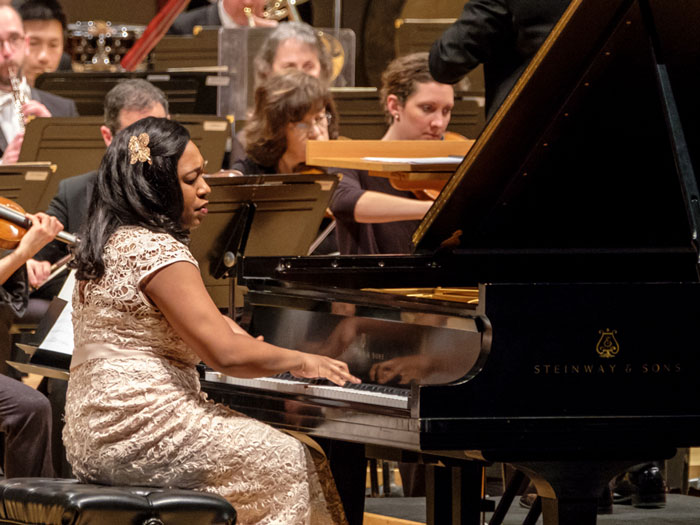
Ultimately, the only thing that matters is how you view yourself independently. If you’re constantly comparing yourself to those around you, you’ll never feel like you’ve arrived. That’s in part because when we achieve one standard, we are looking for the next one. And we should always be striving for more, but the question is, how are you going to accept the journey? Are you going to say, “I’m never there, I haven’t achieved real success until I get to X…” But getting there is elusive because we never really get there. People who think that way are never satisfied.
I believe in and have tried to find a sense of balance by setting realistic goals for myself wherever I’m at in life at that time, and then pushing to try to achieve those goals, big or small. And then you have to look at your own life and journey and celebrate each thing you achieve as you move forward. And wherever you end up, be proud of having gotten to where you are, because that’s what makes you you.
Related Posts
There are no related posts yet. Check back soon!
Mandolin and Accordion Lend a Fresh Sound to Classical Music

Mandolin and Accordion Lend a Fresh Sound to Classical Music
Featuring exclusive insights from Avi Avital and Hanzhi Wang
By Janet E. Bedell, program annotator and feature writer
Ever since its development in the Italian courts of the late 17th century, the mandolin has been an extraordinarily popular instrument, yet star mandolinist Avi Avital says it has a very small concert repertoire—a lack he, as a classical artist, is eagerly trying to remedy. “Unfortunately, the great composers—Bach, Mozart, Beethoven, and so forth—never wrote one single note for the mandolin. I think it was because the mandolin was so very popular, they considered it more an amateur instrument than a classical or orchestral one” and thus perhaps not worthy
of their attention.
 To date, Avital has commissioned more than 100 works from contemporary composers to enlarge the mandolin’s repertoire. In addition, he has chosen to play many classical works written for other instruments, as he will do at Cal Performances’ Oct. 15 concert with Hanzhi Wang. (The Chinese accordionist has similar aspirations to develop her instrument—also long-associated with folk and popular music—as a legitimate classical voice.) As
To date, Avital has commissioned more than 100 works from contemporary composers to enlarge the mandolin’s repertoire. In addition, he has chosen to play many classical works written for other instruments, as he will do at Cal Performances’ Oct. 15 concert with Hanzhi Wang. (The Chinese accordionist has similar aspirations to develop her instrument—also long-associated with folk and popular music—as a legitimate classical voice.) As
he prepares this music for performance, Avital says “I prefer to use the word ‘adaptation’ to ‘arrangement.’ I try to change the original music as little as possible to suit our instruments. For instance, with the Bach Chaconne on this program, I play it straight from Bach’s original score for violin.”
Avital says he has been watching Wang’s development for several years now. “I’ve seen her turn from a young professional into a true artist. And I love working with the accordion: mandolin and accordion are instruments that really complement each other. Most of the pieces on this program are for violin and piano, and our instruments suit those roles perfectly: the mandolin takes the violin’s part and the accordion the piano’s. The mandolin has a sound with a relatively quick decay while the accordion has a more sustaining sound.”
Adds Hanzhi Wang, “As a keyboard instrument with the approximate range of a Steinway grand, as well as the tone qualities of a wind instrument, [the accordion] also seems to be able to give the illusion of a small orchestra.”
Two Artists on the Rise
Though in America the mandolin is mostly associated with bluegrass and the accordion with polka bands and the Lawrence Welk Show, Avital says that in Europe and in his native Israel, they are now being regarded as classical instruments and are taught in conservatories.
Growing up in Be’er Sheva in the southeastern desert of Israel, Avital began taking mandolin lessons at age eight with a remarkable teacher, the Ukrainian violinist Simcha Nathanson. “He emigrated to Israel,” says Avital, “and wanted to teach violin in Be’er Sheva’s music school. However, the school told him they already had a violin teacher, but that there were lots of mandolins in the basement—could he teach that? So he formed a mandolin orchestra, which I played in until I was 18, and taught the instrument using the violin as a model.
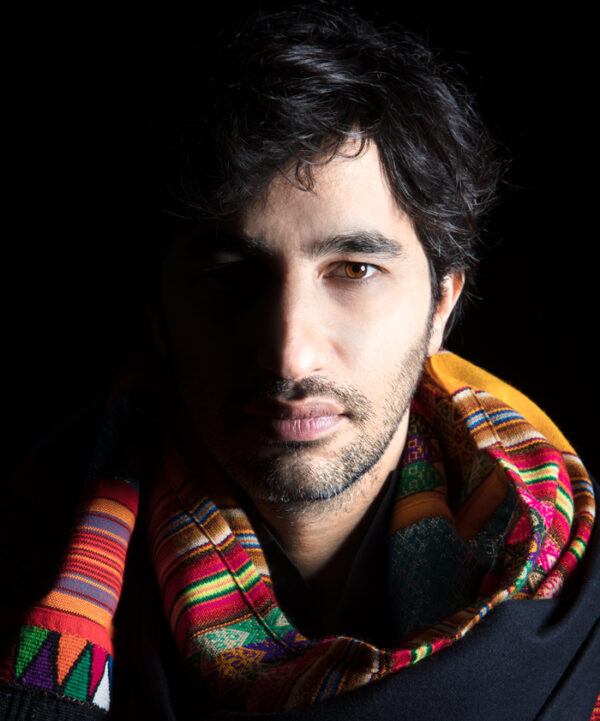 “Mandolin and violin actually have a lot in common: they are both soprano instruments, and they are tuned in fifths with the same open strings of E–A–D–G. The violin immediately became part of my culture. My teacher arranged classical music for our orchestra to play. So that really was my musical education. Because he taught mandolin more strictly than it was typically taught, I think I was actually receiving a deeper foundation in music than I would have had if I’d had a more conventional teacher.”
“Mandolin and violin actually have a lot in common: they are both soprano instruments, and they are tuned in fifths with the same open strings of E–A–D–G. The violin immediately became part of my culture. My teacher arranged classical music for our orchestra to play. So that really was my musical education. Because he taught mandolin more strictly than it was typically taught, I think I was actually receiving a deeper foundation in music than I would have had if I’d had a more conventional teacher.”
Leaving Be’er Sheva, Avital continued his training at the Jerusalem Music Academy, then did graduate work in Italy at the Conservatorio Cesare Pollini in Padua, studying with renowned Italian mandolinist Ugo Orlandi. His innovative career steadily growing, in 2007, Avital became the only mandolinist to win the top prize in Israel’s prestigious Aviv Competition. He would later become the first mandolinist to be nominated for a classical Grammy Award.
At age five, Hanzhi Wang fell in love with the sound of the accordion while watching an Italian movie on television with her father. “I immediately asked to have one to play.” Starting with a small eight-button instrument, she advanced to being accepted by Beijing’s Central Conservatory at age 13. Later, after earning her bachelor’s degree, she moved to Copenhagen, where the Royal Danish Conservatory has a renowned accordion department, for her master’s work. In 2017, Wang became the only accordionist to win the Young Concert Artists auditions, and in 2018, Musical America named her as “New Artist of the Month.”
Oct. 15 Program Preview: Listening in a New Way to Familiar Classics
“Paying tribute to the folk origins of our two instruments,” says Avital, “I’ve focused on works by classical composers that were derived from folk melodies that they enriched with the complex harmonies, rhythms, and formal structures of classical music. Bartók’s Romanian Folk Dances is the central piece here, using music Bartók collected around Romania and then scored first for solo piano, then for small orchestra.” Much the same approach was taken by the two Spanish composers, Pablo de Sarasate and Manuel de Falla; they adopted Spanish folk melodies for Sarasate’s virtuosic Spanish Dances for violin and piano and the “Danse Espagnole” used in Falla’s opera La vida breva.
Famed violinist Fritz Kreisler’s Praeludium and Allegro “in the Style of Pugnani” and Igor Stravinsky’s Suite Italienne—an arrangement of selections from his ballet Pulcinella for violin and piano—are hybrid works blending Baroque style with a more modern idiom. Kreisler’s piece is actually a musical hoax: in 1905, he published it as a long-lost work by Italian Baroque composer Gaetano Pugnani, then 30 years later admitted he’d written it himself. Stravinsky’s 20th-century harmonic and rhythmic bite drastically transformed music written by Giovanni Battista Pergolesi and others in the early 18th century.
A solo piece for Avital, J.S. Bach’s Chaconne in D minor from his Partita No. 2 for unaccompanied violin is one of the monuments of musical history. Avital’s relationship with the Chaconne goes back to age 13, when he bought a book of the complete violin partitas and sonatas. “For most musicians I know, Bach is the ultimate composer. His music is so complex and perfectly constructed. Every time you come back to the Chaconne, you find more information, more elements to bring out. I can never play it the same way twice. And I found that with the mandolin I don’t miss any of the impact of Bach’s music.”
Avital plays a special mandolin made expressly for him by Israeli luthier Arik Kerman. “He shares the same ideas I do about how the mandolin needs to be developed, and he created for me an instrument that has more power and a richer, warmer sound that meets the needs of larger modern concert halls. We work together on it whenever I’m in Israel—constantly trying to further develop the capacities of this same instrument. And to give listeners a new voice, a new way to experience music they’re familiar with.”
Related Posts
There are no related posts yet. Check back soon!
An Eclectic Survey of Ai Weiwei’s Artwork: 10 Works to Know
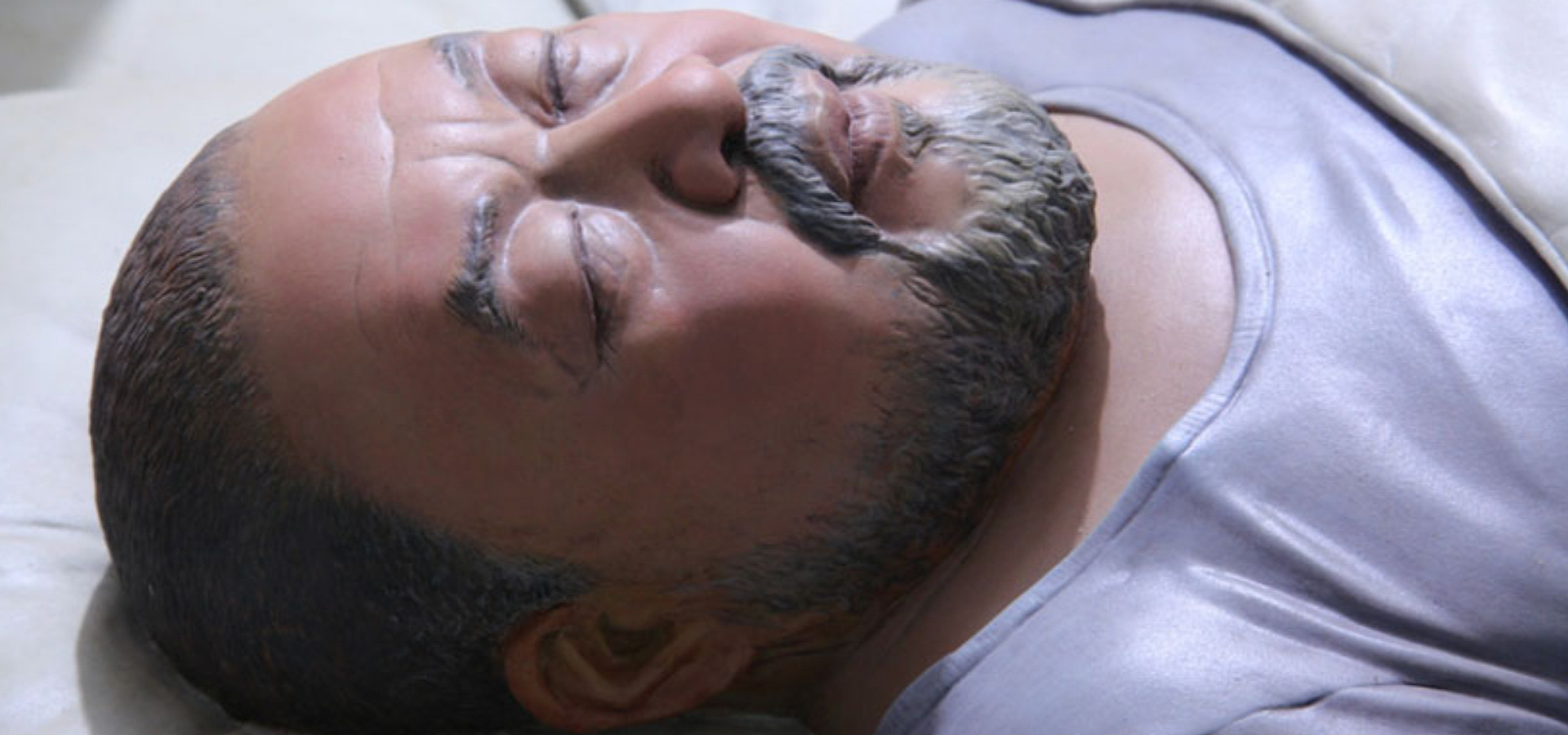
An Eclectic Survey of Ai Weiwei’s Artwork: 10 Works to Know
“Art is a tool to set up new questions.”
By Krista Thomas, Cal Performances’ Associate Director of Communications
Ai Weiwei’s adventurous work in sculptural installation, filmmaking, photography, ceramics, painting, writing, and social media is widely acclaimed for shedding light on pressing societal issues and values. The renowned artist and activist was born in Beijing in 1957 and for decades has been an outspoken voice on social issues including human rights, especially as they have related to his home country of China, where he has been the target of frequent government interference and was once imprisoned for nearly three months without charges. Currently residing in Portugal, Ai continues to advocate for international human rights, with his work and life often informing one another.
Throughout his decades-long career, Ai has developed powerful works of art that show an incredible range, both in their medium and in their subject. To help you become better acquainted with his artistry ahead of his visit to Cal Performances on September 24, we’ve compiled 10 of Ai’s works showing the breadth and depth of his creative vision and mission.
1. S.A.C.R.E.D., 2013
S.A.C.R.E.D. is an intimate and unsettling installation created by Ai to depict the conditions in which he was kept during his 81-day imprisonment in China in 2011. The work features six diorama scenes, whose individual names together make up the acronym S.A.C.R.E.D.: Supper, Accusers, Cleansing, Ritual, Entropy, and Doubt. In six separate 5ft x 12ft steel boxes, Ai utilizes figures of himself, guards, and a bleak enclosure to depict his degrading daily routines and the constant surveillance he endured. The doors on the outside of the boxes are merely a facade and cannot open; to see the dioramas inside the boxes, viewers must look through small apertures in the walls, contributing to the sense of surveillance and isolation within.
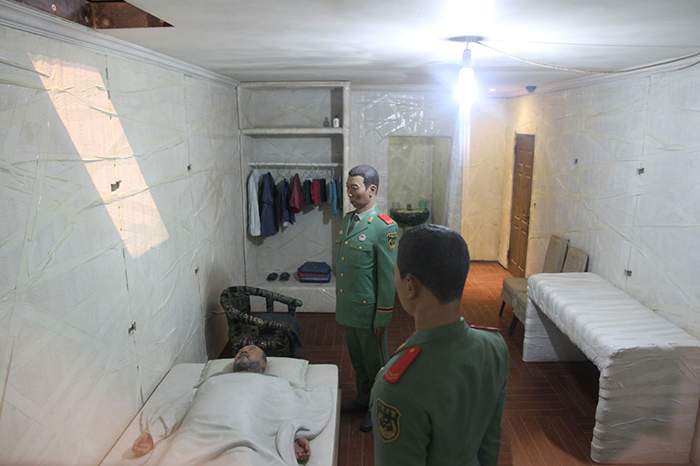
Photograph of a scene from S.A.C.R.E.D. Image courtesy of designboom.
See additional photos from the exhibit.
2. Study of Perspective, 1995–2003
Since 1995, Ai has been taking photos of his middle finger pointed at spaces and symbols that represent political/national power, including the Eiffel Tower, the White House, and even the Mona Lisa. Ai’s first photograph in his series was produced at Tiananmen Square where, upon visiting after his return to the country, he was disheartened to feel that not enough had changed. Ai reports that the photo is an expression of his “inner frustration” and represents “the stance and attitude of individual existence” within larger structures of political, cultural, and economic power. In recent years, Ai has evolved the project to include an interactive element by which individuals around the world can create and submit their own images overlaying a location with Ai’s iconic middle finger.

Select images from Study of Perspective. Image courtesy of The Artling.
Read more about this project and learn about the interactive feature (and begin making your own image!)
3. Forever Bicycles, 2014
Forever Bicycles is a work of sculpture that fuses over 1,000 bicycles into a fascinating geometric design. The term “Forever” references a popular brand that has mass produced bicycles in Shanghai since the 1940s, and it has been suggested that the sculpture itself invites consideration for the disparate ways that various social classes in China have historically used—and continue to use—bicycles as a means of transportation, as well as the global shift from bicycles to automobiles.
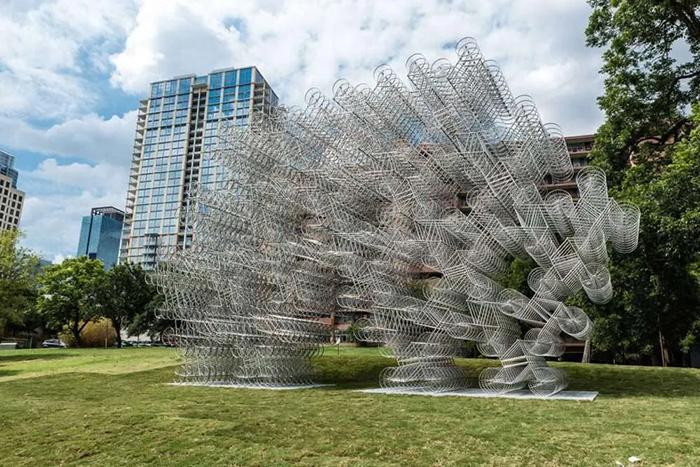
Photograph of Forever Bicycles. Image courtesy of Sightlines.
4. National Stadium of Beijing (“The Bird’s Nest”), 2005–08
Ai collaborated with Swiss architects Herzog and de Meuron to design the stadium that would be used to host the 2008 Beijing Summer Olympics and Paralympics. According to design firm Arup which helped execute the project, the circular design of the stadium represents heaven, while the neighboring water center represents the Chinese symbol for earth; additionally, the intersecting lines that contribute to the stadium’s nest-like appearance are inspired by Chinese-style crazed ceramics. Despite designing the building, Ai did not attend the Olympics, later regretting the project’s use as a political tool to promote China’s greatness despite the government’s record of human rights abuses.
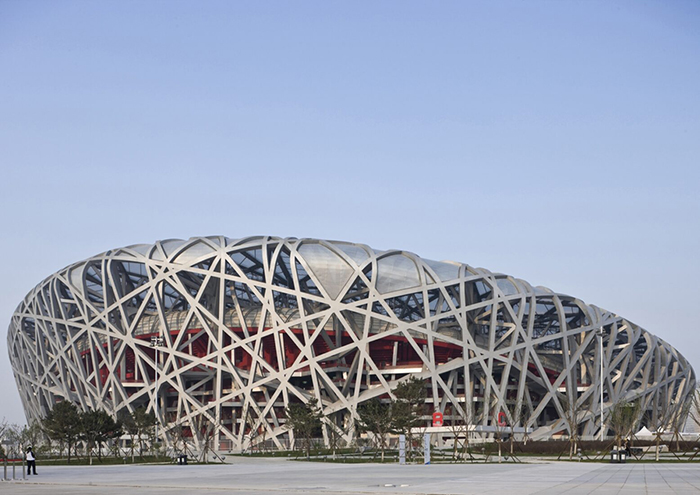
Photograph of the National Stadium of Beijing. Image courtesy of Architectuul, © Iwan Baan.
5. Sunflower Seeds, 2010
Perhaps Ai’s best known creation, Sunflower Seeds comprises 100 million porcelain sunflower seeds, individually crafted and painted by roughly 1,600 Chinese artisans who reside in a village that was historically used to develop porcelain for the courts of ancient emperors. Individuals are invited to walk on, pick up, and feel the porcelain seeds—in part as a way to wrap their minds around the idea that these are in fact porcelain and not true seeds. As to the significance of the sunflower seeds, in Chinese culture, Mao Zedong was often depicted as the sun. Additionally, Ai has said of his own experience with the seeds, “When I was growing up in China, we had few possessions. … But even in our darkest days, we might well have had a little handful of sunflower seeds in our pockets. They offered spiritual comfort as well as a modest answer to our hunger, and people were always cracking seeds between their teeth.”

Photograph of Sunflower Seeds. Image courtesy of Tate, © Ai Weiwei.
6. Human Flow, 2017
Ai served as director and co-producer of Human Flow, a poignant visual documentary that captures the experiences of refugees across 23 countries as they seek “safety, security, and justice.” From Bangladesh to Mexico, from stretches of barbed wire fences to harrowing ocean journeys, the film exposes the struggle of individual people, but also delivers a message of hope and of the resilience of the human spirit.

Ain Al-Hilweh, Lebanon, 04/09/2016. Image courtesy of Human Flow.
Learn more about Human Flow, including where to watch and take a look at photos from the film project.
7. Dropping a Han Dynasty Urn, 1995
This set of three photographs, produced early in Ai’s career, shows him in preparation, during, and after purposefully breaking a valuable urn from China’s Han Dynasty (206 B.C.–220 A.D.). The work challenges the idea of how we form and preserve cultural values, particularly around historic and national identity. It was also said to have been a potential response to how Mao Zedong had attempted to divorce China from elements of its traditional history during the Cultural Revolution. One of Ai’s most provocative works, the piece sparked debates internationally about whether or not the action of breaking the urn qualified as “desecration,” and even whether or not destruction should be interpreted as art.
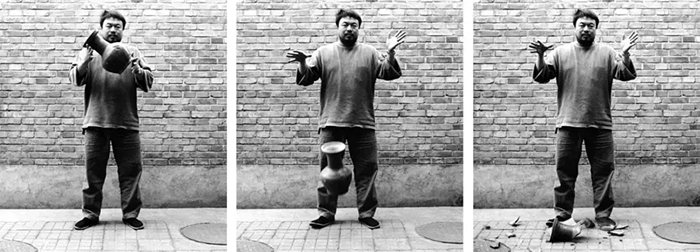
Dropping a Han Dynasty Urn. Image courtesy of Royal Academy.
8. Ye Haiyan’s Belongings, 2013
Ye Haiyan is a Chinese women’s rights activist who was frequently targeted by the Chinese government and eventually cast out of the country. Ai, who was an ally for Ye and helped to support her when she was removed from her home, created this installation with all of the hastily packed belongings Ye was left with upon eviction. The exhibit is a powerful rendering of displacement, a common theme in much of Ai’s work.
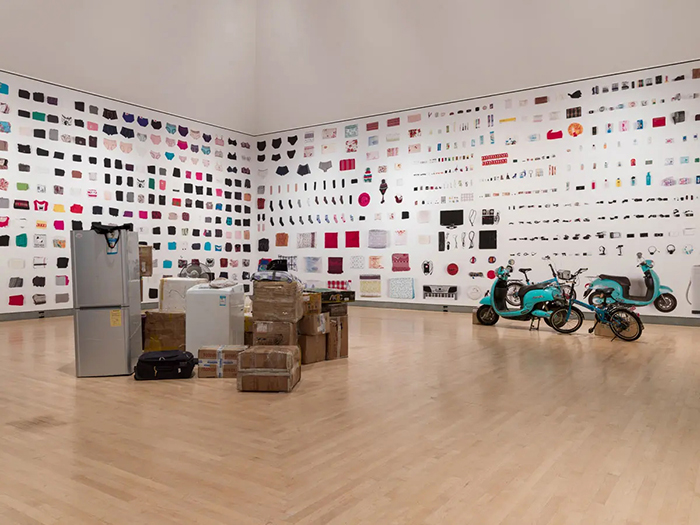
Photograph of Ye Haiyan’s Belongings. Image courtesy of Royal Academy.
9. Water Lilies #1, 2023
Ai’s 50-foot recreation of Claude Monet’s Water Lilies is made entirely out of Legos—approximately 650,000 of them. Ai explained, “In Water Lilies #1, I integrate Monet’s Impressionist painting, reminiscent of Zenism in the east, and concrete experiences of my father and me into a digitized and pixelated language.” Ai’s father was a renowned poet in China whose criticism of the government led to the family’s exile. Reflecting this experience, Ai integrated the outline of a black door into the traditional Water Lilies image to represent the underground dugout where his family once lived.
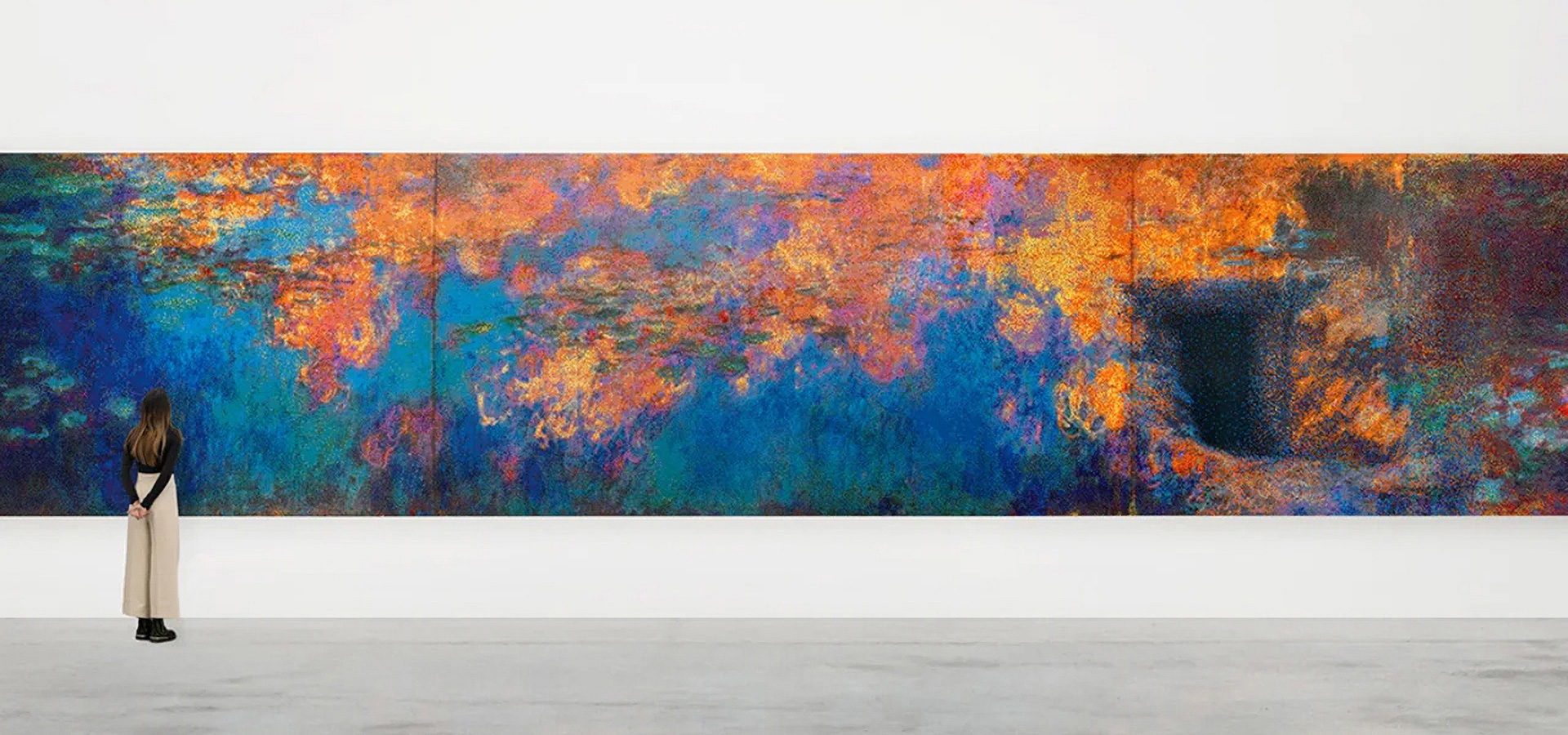
Photograph of Water Lilies #1. Image courtesy of CNN, Ela Bialkowska/OKNO studio.
10. So Sorry, 2011
Ai dedicated multiple art projects to the thousands of schoolchildren who died when their classrooms collapsed during the Sichuan earthquake of 2008. These works include Remembering, which used colored backpacks adhered to the facade of a building to spell out a quote from one of the victim’s mothers, reading in English: “She lived happily on this earth for seven years”; and Straight, a sculpture made from tons of reinforcing rods that were hand-straightened after being distorted during the earthquake. Following the disaster, Ai became a leading voice calling for accountability and exposing corruption that led to the building failures—and later attempts by the government to cover it up. So Sorry is a documentary produced by Ai that tracks his investigative work on the case and the backlash and physical violence he experienced at the hands of the government in reaction to his advocacy.
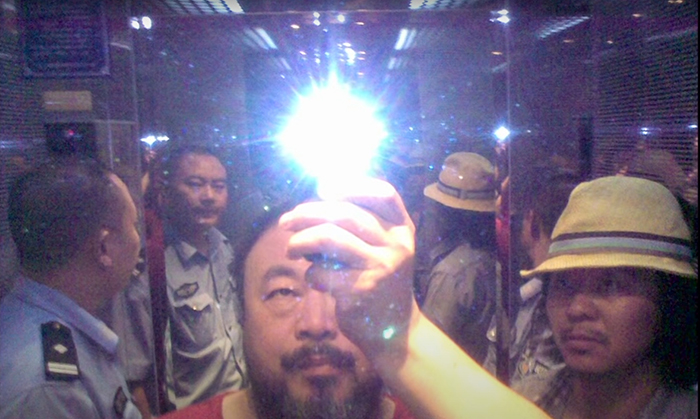
Still image from So Sorry.
Related Posts
There are no related posts yet. Check back soon!
What It’s Like to Be a UC Berkeley Student Working at Cal Performances
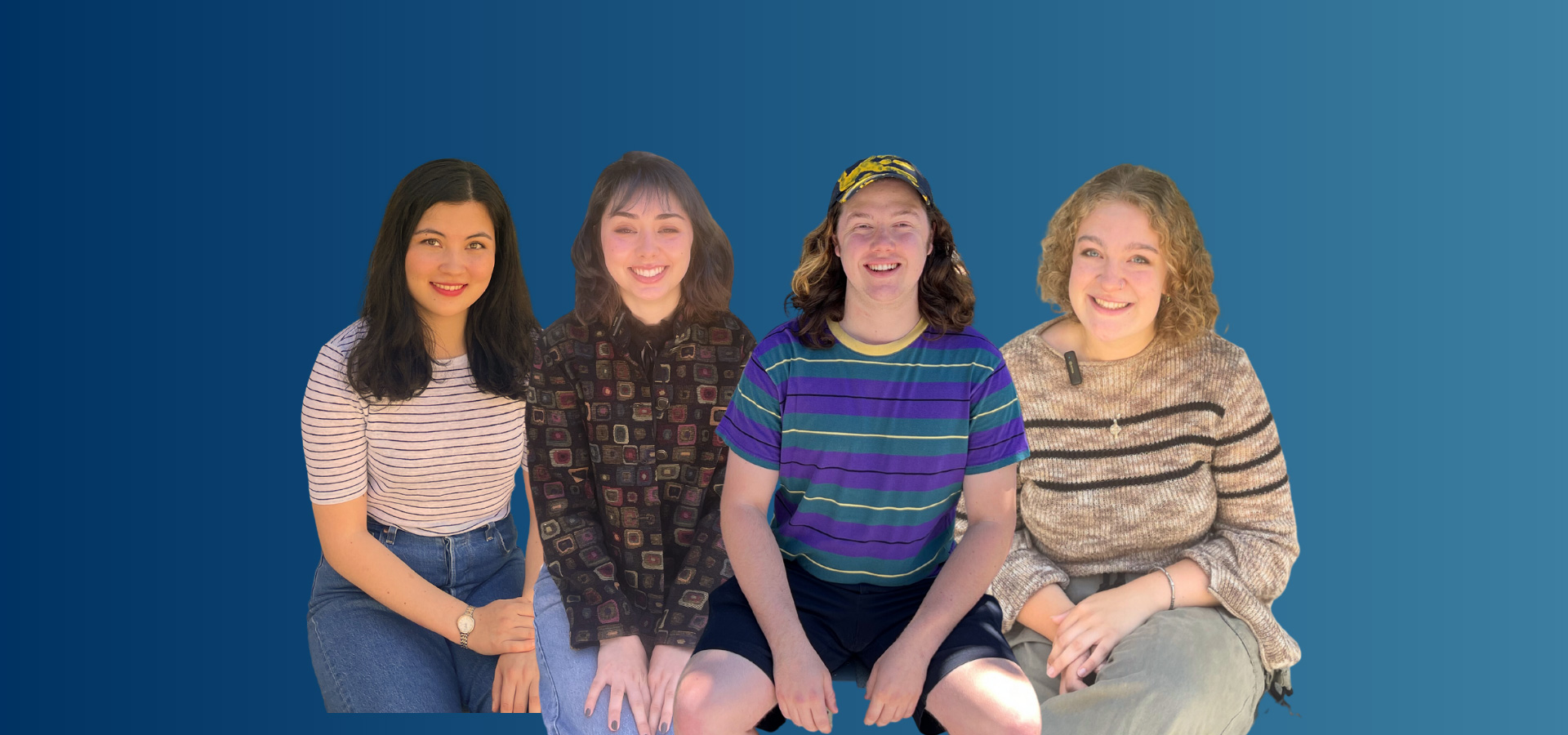
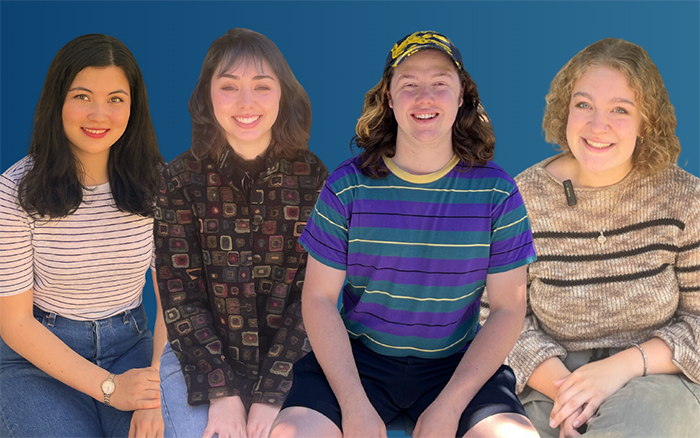
What It’s Like to Be a UC Berkeley Student Working at Cal Performances
Roughly 75 students work critical roles at Cal Performances each season.
Featuring Cal Performances student workers: Shane Barrows, Usher Captain & Assistant House Manager; Jordan Dudas, Scene Technician; Alisa LeFebvre, Front of House Manager; and Mina Rossman, Lead Cashier. Video filming and editing by Tiffany Valvo, Cal Performances’ Social Media and Digital Content Specialist.
UC Berkeley students have a plethora of options when it comes to choosing an on-campus job. So, what makes a student apply to—and stay at—a performing arts center? What kind of skills do they hone here, and are they relevant to more than just music, dance, or theater majors? We interviewed four of the roughly 75 UC Berkeley student workers employed by Cal Performances year-round to learn more about their perspective on the important work they do to support our organization.
Interested in working for Cal Performances? Visit our Jobs page to see what positions are open.
Cal Performances Artistic Leadership Reminisces on Memorable Moments from the 2022–23 Season
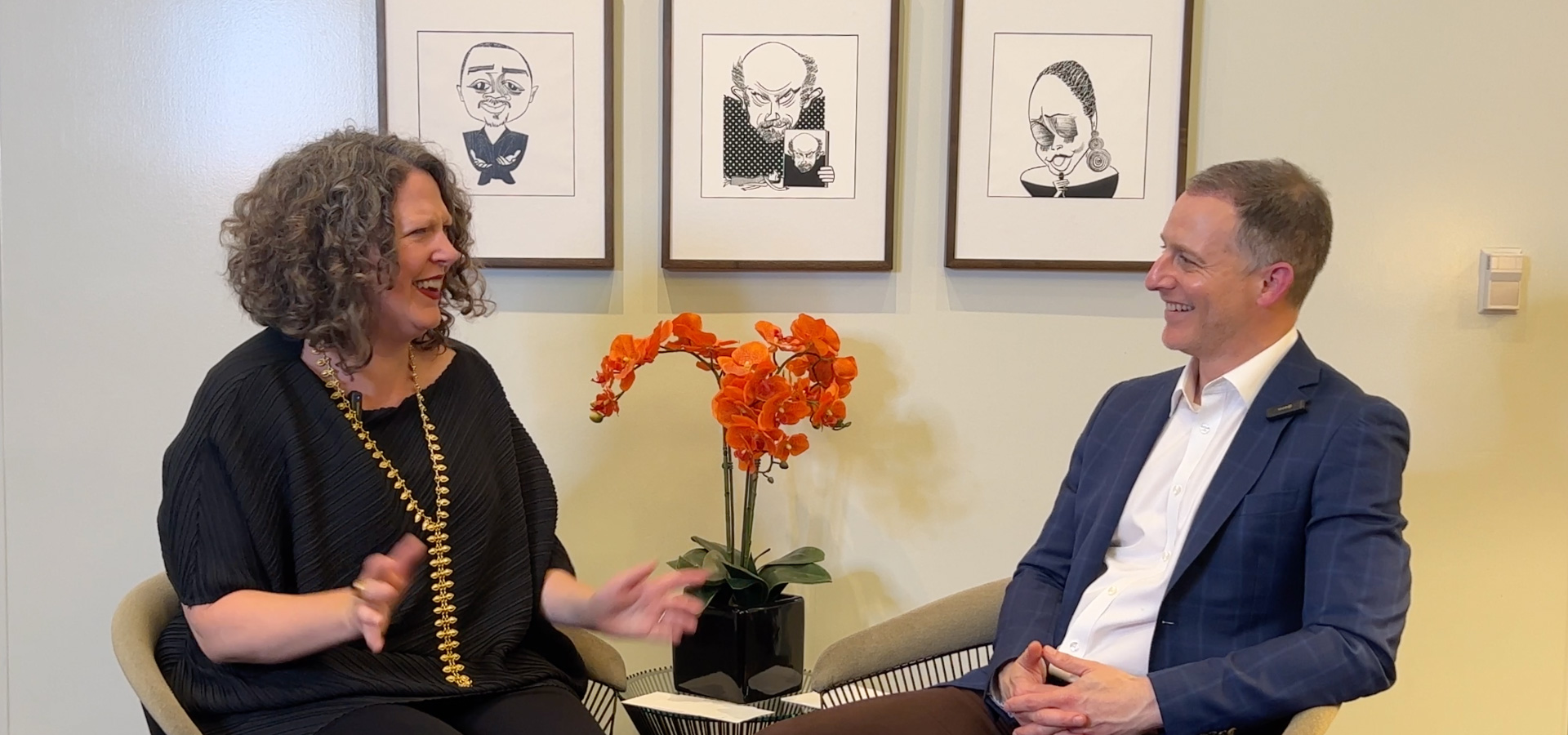
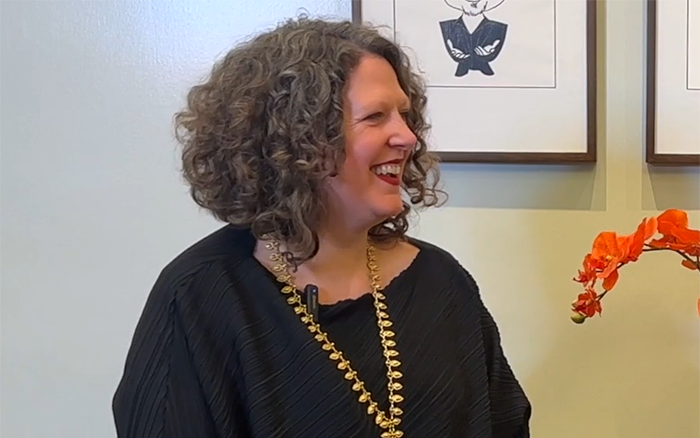
Cal Performances Artistic Leadership Reminisces on Memorable Moments from the 2022–23 Season
From the Two Who Saw It All!
Interview of Jeremy Geffen, Cal Performances’ Executive and Artistic Director, and Katy Tucker, Cal Performances’ Director of Artistic Planning. Video filming and editing by Tiffany Valvo, Cal Performances’ Social Media and Digital Content Specialist.
As we inch closer to the start of our 2023–24 season, Cal Performances’ Executive and Artistic Director, Jeremy Geffen, and Director of Artistic Planning, Katy Tucker, take one final moment to reflect on some of the highlights and surprises of the past year. In this video, they answer:
- What performance made you the most emotional? (0:33)
- Share a time when a member of a group or ensemble really stood out to you. (1:47)
- Which performance ran smoothly on the surface but, due to unforeseen circumstances, required lots of scrambling/problem-solving behind the scenes? (3:29)
- Share a moment (outside of William Kentridge’s campus residency) when you got to see an artist really connect with students. (5:13)
- In which performance did you feel the greatest sense of community? (7:21)
Note that, for context, you can find programs for each performance mentioned in the video linked in the transcript below.
Transcript
Jeremy Geffen:
Hi, I am Jeremy Geffen, Executive and Artistic Director of Cal Performances.
Katy Tucker:
And I’m Katy Tucker, Director of Artistic Planning at Cal Performances.
Jeremy Geffen:
We are seated backstage in Zellerbach Hall in the Green Room, which is generally where artists warm up, and it is the last thing they see before they see all of you when they walk out onto the Zellerbach Hall stage.
Katy Tucker:
And today, Jeremy and I are going to be looking back over the 22–23 season and sharing some of our favorite memories from this past year.
What performance made you the most emotional?
Katy Tucker:
I was just openly sobbing during William Kentridge’s week with us multiple times. But both parts of that performance [SIBYL], “The Moment Has Gone” by Kyle Shepherd and “Waiting for the Sibyl” were just transformative life experiences.
Jeremy Geffen:
I have to agree with you on this one, that like, from the from the moment that Kyle Shepherd started playing in “The Moment Has Gone,” there was something that just like instantly transported you.
But if I can add another one to this, just a few days earlier, we had the Vienna Philharmonic with us and gave a performance of Bruckner’s Symphony No. 8 that has to be on my top 10 lists of musical performances of my lifetime. It was one of those moments where you think, “I don’t know if the composer actually understood that this the piece was capable of this”—the depth, the feeling of ensemble, just the quality of the sound… That really got me, too.
Share a time when a member of a group or ensemble really stood out to you.
Katy Tucker:
After Camille Brown & Dancers’ first performance—they did two or three shows—after their first performance, I was walking out of the building, and I ran into one of the dancers who had in the piece done something like 10 or 15 successive jumps, just jump, like this, just straight up in the air like this. And he got so high and he was so pin straight, and it was so beautiful and athletic. And I said to him something like, “Bet you didn’t know you could do that in your dance career,” or something like that. And he’s like, and he said, “Yeah, this isn’t even my real job.” And I was like, “What else can you do better than this?” And he just laughed and walked away from me. Just like, what?
Jeremy Geffen:
So I’m thinking of the performance of Artemis. They were all stars, but I don’t think I was, and each one of them is a virtuoso. They’re also composers. So we had compositions from most of them. There was a new album coming out. The drummer, Allison Miller. I mean, she made Animal look like he was tamed, sedate. She was just the most energetic, inspiring, and kinetic performer. I could have watched her for hours.
Which performance ran smoothly on the surface but, due to unforeseen circumstances, required lots of scrambling/problem-solving behind the scenes?
Jeremy Geffen:
I have a feeling you’re probably thinking of the exact same situation that I am.
Katy Tucker:
The Guided Tour of the Exhibition?
A long story short: the cargo for some of the William Kentridge events didn’t arrive on time due to shipping issues in France! For reference, Guided Tour was on a Wednesday and the SIBYL premiere was Friday.
Jeremy Geffen:
Yes. So the morning of Guided Tour of the Exhibition, actually I think this plan had been made the day before.
Katy Tucker:
The day before, yeah.
Jeremy Geffen:
They sourced all of similar types of props and costume and even sets from within Zellerbach Hall and also from our friends at the Department of Theater, Dance, and Performance Studies.
Jeremy Geffen:
And on Thursday, I think, on Wednesday I think we got—
Katy Tucker:
Half of—
Jeremy Geffen:
Yeah. Some part of SIBYL, but none of Guided Tour.
Katy Tucker:
Correct.
Jeremy Geffen:
Thursday we got the remaining part, and they got that very complicated show up in a little over 24 hours. Which, I mean, I don’t think that was apparent to anyone in the audience.
Katy Tucker:
No. And a huge boon to our technical staff, who were really the people who were undergoing the most rehearsal process for that, because, of course the cast had just done it in Paris. Our crew had never moved the chair that breaks or swept up all of the papers that they throw all over the stage. And so they had basically 24 hours to learn an incredibly difficult show. And it looked fabulous on Friday night when it opened. So, a huge success. But a sweaty one!
Share a moment (outside of William Kentridge’s campus residency) when you got to see an artist really connect with students.
Katy Tucker:
This is something that I’ve known, I knew already, but it was really reinforced in a very real way. But Jeremy Denk is such an unbelievable performer, and an equally unbelievable teacher. He gave a masterclass this year for us in the music department. He worked with four young pianists out of the music department. And the depth of his knowledge about repertoire, the thoughtfulness with which he approaches music-making, and his ability to articulate it in such a human and totally open way, it was really touching, it was really beautiful. I loved watching him give that masterclass.
Jeremy Geffen:
Can I add one more? When Maxim Vengerov give his recital in October, you know, I didn’t realize—we are on the campus of a major university—there were so many students who clearly had grown up listening to his recordings. They found every entrance to this building and they waited outside each of them to meet him afterwards. And when we were driving out of the parking structure, we saw a group of people standing up at the corner. And this is like 10:30 at night on a Friday night in Berkeley; it’s not a time that you see these sorts of clusters of people. When it turned out they were waiting for him, he got out of the car, he spoke with every single one of them, as he did with all the other students he encountered. He was incredibly gracious and really engaging, and he loved talking to his fans.
In which performance did you feel the greatest sense of community?
Jeremy Geffen:
There are a lot of performances where you feel community, and it’s different types of community. Kyle Abraham’s piece for Ailey [Alvin Ailey American Dance Theater], Are You in Your Feelings?, is that—
Katy Tucker:
Yep.
Jeremy Geffen:
It was, like, the most virtuosic piece for that company featuring, you know, all sorts of combinations of dancers and so many different styles. And, you know, there’s this moment that you get when you’re all seeing something new for the first time, and that, “Oh my God, this is incredible”—that feeling was absolutely rising from the audience and you know, the electricity of the reception definitely reflected it.
Katy Tucker:
Parable of the Sower was—I’m not a sci-fi fan; I did listen to that book on tape in sort of preparation for our presentation of it… And to see all of the people come out because of Toshi, because of Octavia E. Butler, because of the combination of the two, you know, a very large portion of an audience that kind of comes already with some preconceived information; but then to be totally taken over and, like, beguiled by the absolutely gorgeous music in that opera, all kind of leading up to a group singing moment at the very end of a song that Toshi teaches everybody in the audience that her mother [Bernice Johnson Reagon] wrote… This is a very simple song about “a sower went out to sow her seeds.” And it just was such a beautiful cap to not only that piece, but our season, and it felt like there was a lot of involvement with each other in those moments. It was very heartening.
Jeremy Geffen:
I’m gonna add one more. Rachell Ellen Wong. One of the things that I know that we share is the belief in giving artists a shot at the beginning of their career. And, you know, when you’re introducing an artist to the public, all you’re doing is essentially giving them a turn at bat. And then it is up to them to hit the ball. And watching someone hit it out of the park… And by the way, it’s a miracle if that—
Katy Tucker:
Sports reference landed.
Jeremy Geffen:
—If that sports metaphor was correct, because I’m so bad with sports. But I just… the fire that came from her, like, there was an enormous amount of scholarship that went into that program because there were some really off-the-beaten-track pieces by composers that I think only a few people in the audience would’ve heard from. But, oh man, just that moment of discovery, it’s sort of similar to Kyle Abraham’s piece, that when you’re all having this moment together, you feel it.
Katy Tucker:
For sure, for sure.
A Day in the Life of an AileyCamper
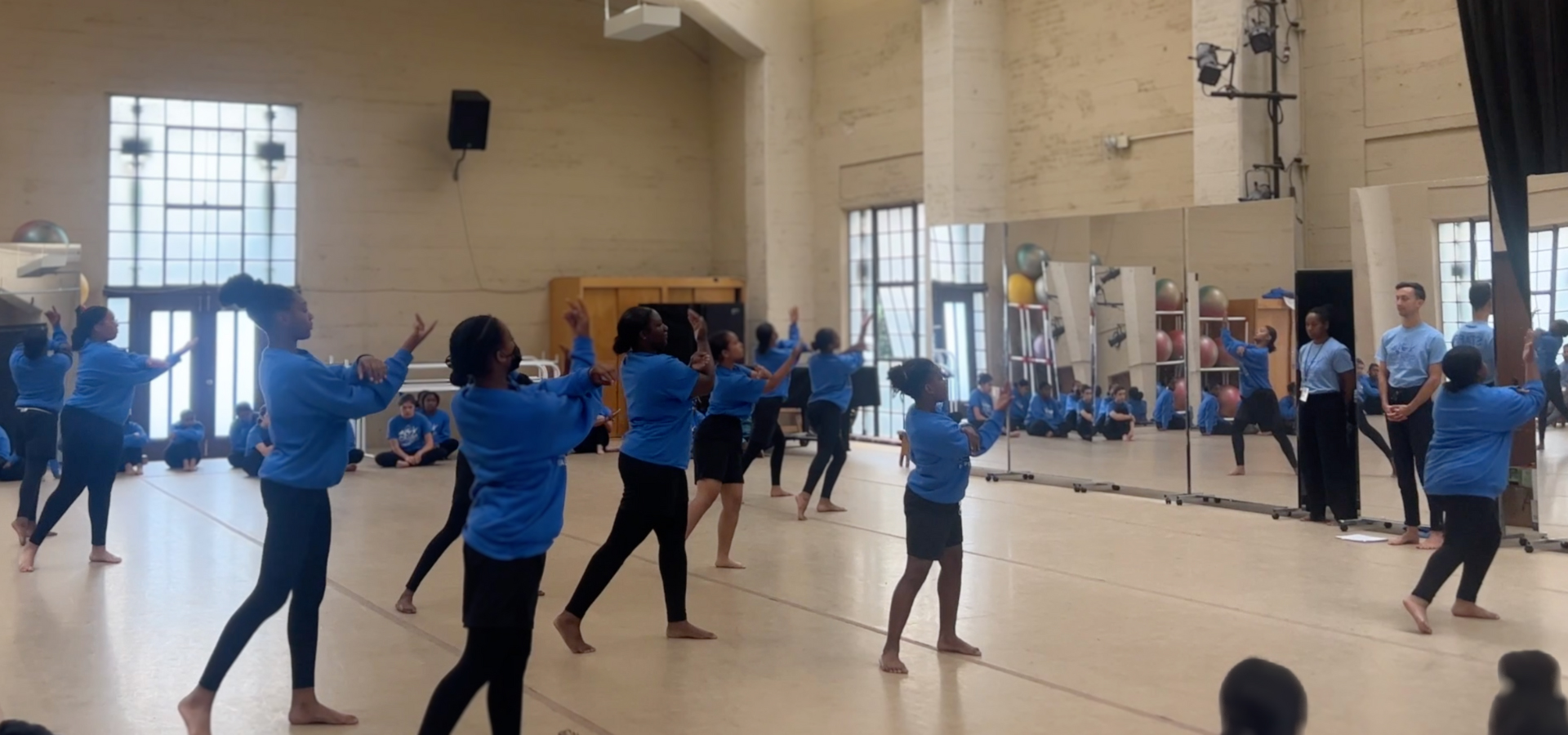
A Day in the Life of an AileyCamper
Behind the Scenes of Berkeley/Oakland AileyCamp’s 21st Year
Video by Tiffany Valvo, Cal Performances’ Social Media and Digital Content Specialist
Berkeley/Oakland AileyCamp is a joyful and rigorous six-week program, free to youth ages 11 to 14, that has been hosted by Cal Performances for 21 years! Conceived by Alvin Ailey himself, the camp is designed to use dance as a vehicle for personal development, and cultivates a supportive community where young people can connect meaningfully with each other and with caring adults, express themselves creatively, and experience the transformative power of dance.
Although schedules vary and students don’t have each class every day, AileyCampers receive daily training from experienced teaching artists in four major dance forms: modern, ballet, jazz, and African dance. They also explore creative writing and the visual arts in creative communications class, and they enhance their social and emotional development through a personal development course.
AileyCamp is a truly inspirational and exciting experience for the campers—and what better way to demonstrate this than by giving you a look at the day-to-day magic taking place right here on the UC Berkeley campus? On June 25, we followed Berkeley/Oakland AileyCampers around to see what a day in their life is like and got some direct feedback from a wonderful returning camper as well!
For more information on AileyCamp—including how to have a child apply to the program, how to sponsor a child’s free tuition, or how to attend the campers’ final performance later this week—visit calperformances.org/aileycamp.


